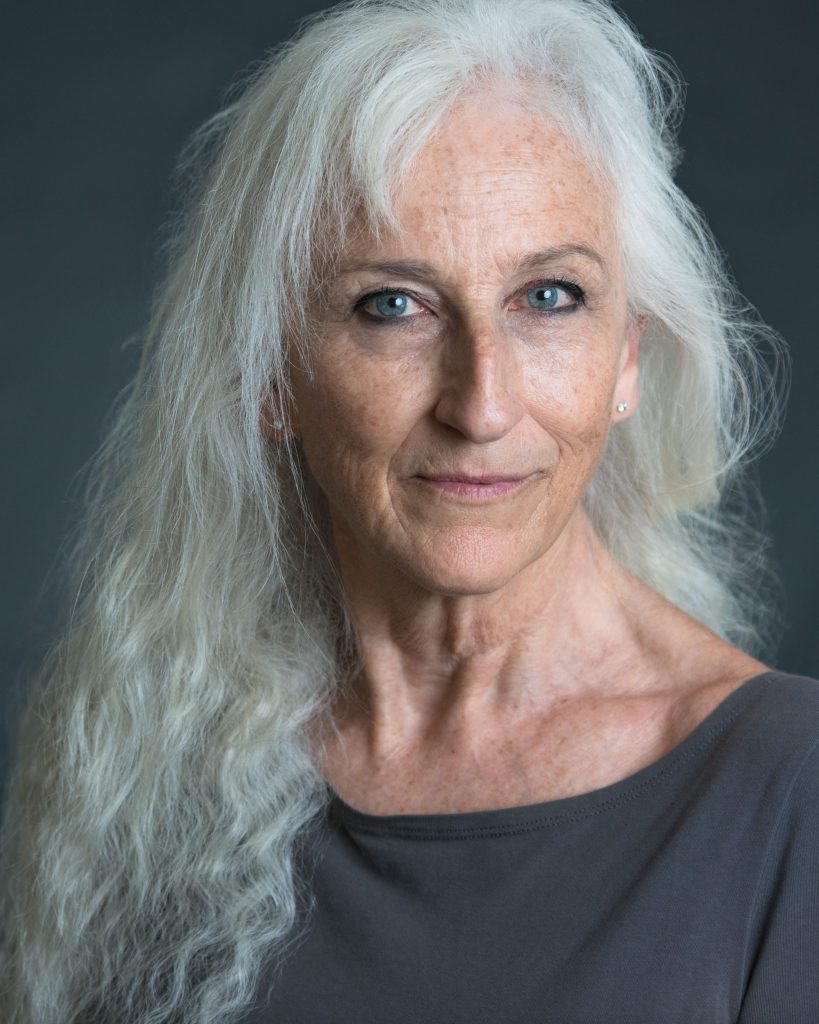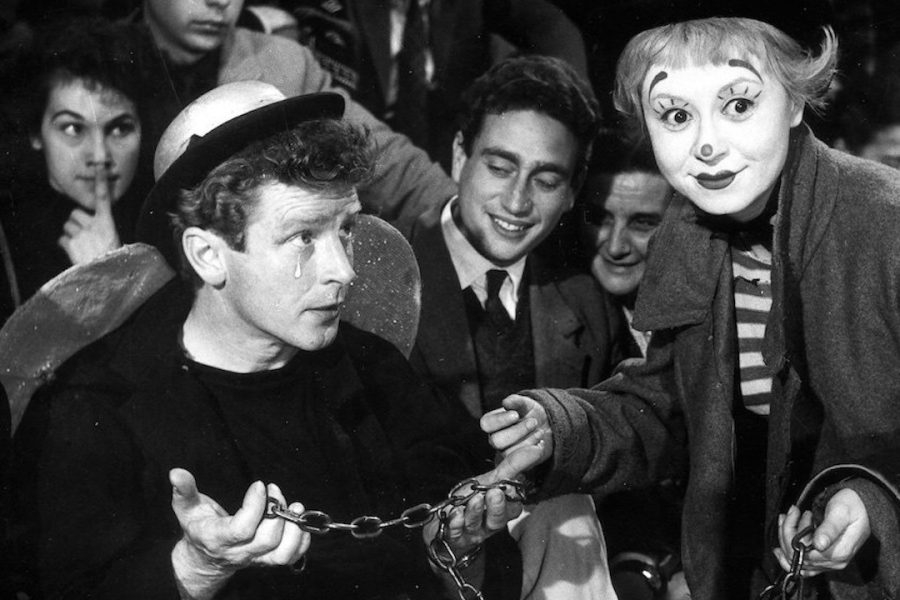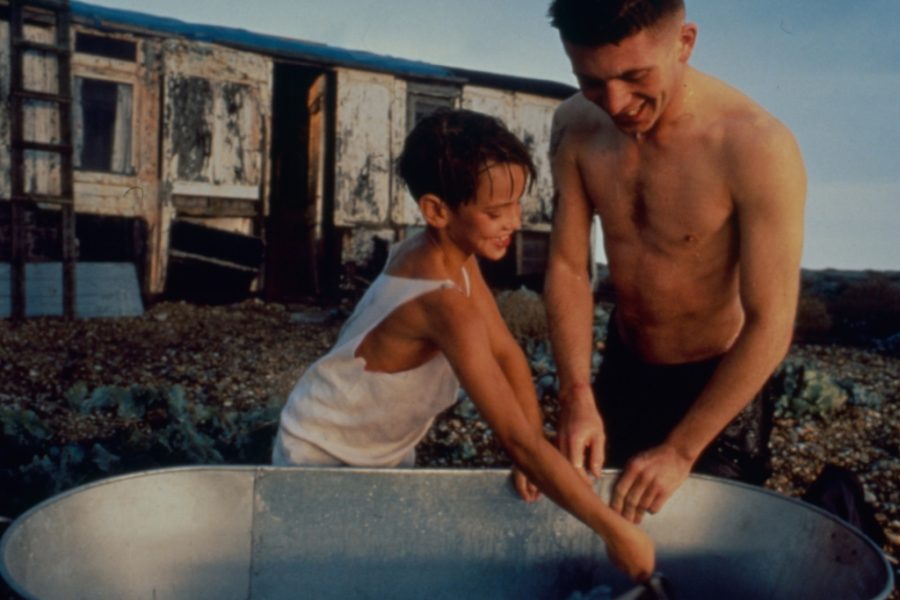The Wind (1928) was the final silent film to be released by MGM. Its director, Victor Sjöström, and star, Lillian Gish, are considered to be amongst the greats of the genre. Based on a supernatural novel by Dorothy Scarborough, the film depicts the loneliness of life in a small Texas town during the 1880s and the psychological turmoil of a young woman, induced by the advances of lustful men and an incessant wind.
It was introduced by artist, performer, curator and theatre-maker Sue Hill. Sue is a founding artist of Wildworks, the ambitious Cornwall-based landscape theatre company. She was also a key member of the original Kneehigh team and served as Artistic Director for the Eden Project.
SUE HILL: INTRODUCTION
When Teresa asked me to make the artist’s film choice, I had a ready-made shortlist. In the last few weeks before my partner Bill [Mitchell] died, in 2017, he became physically very fragile, but still very much connected to the world of ideas, story, art. He suggested that we curate film nights for each other. My shortlist for tonight was made up of his and my choices – Battle of Algiers, Bad Day at Black Rock, Notte di San Lorenzo, Night of the Hunter for him, Tree of Wooden Clogs, Latcho Drom, Koyaanisqatsi and The Wind for me.
The Wind is the last great silent movie to come out of MGM Studios. It was made in 1927, but MGM held back its release until 1928. They’d been spooked rather by the release of Warner Bros The Jazz Singer, the first adventure into synchronous sound, the Talkies. The Wind had some critical acclaim but made a huge loss, 87,000 dollars. It had missed its moment. It was superseded by the screwball, fast-talking, wisecracking movies that flourished in the thirties. It was fifty, sixty years before audiences with fresh eyes came to appreciate its brilliance. Kevin Brownlow revived it with a score by Carl Davis in the 80s. MoMA included it in their retrospective of silent cinema – ‘a quintessential cinematic moment of the rarest and most transcendentally pure art’.
It was Lillian Gish’s project. She secured permission to adapt Dorothy Scarborough’s novel, she chose the director, Victor Sjostrom, and the leading man, Lars Hanson. She was 34 when she made The Wind, but she had been acting since she was a child. Her drunken vagabond father had deserted the family leaving them destitute. Mother, Mary, sister, Dorothy and Lillian worked in the theatre to make ends meet. Chance gave them a next-door-neighbour in New York called Gladys Smith, a young actress the same age as Lillian. Gladys (perhaps better known later as Mary Pickford) was already making films with DW Griffith. She introduced Lillian to him and the rest, as they say, is history. Lillian went on to star in Birth of a Nation, Intolerance, and Broken Blossoms.
She was ferocious in her dedication to her craft, bringing dignity and discipline to what was regarded at the time as a rather cheap tawdry occupation. She fully embraced extreme physical challenges. I wonder if she hadn’t encountered the work of Stanislavsky at this time when he was developing what became the Method in the first three decades of the twentieth century. She famously starved herself for three days before filming the death scene in La Bohème. The director commented that he was concerned they might be filming the death of the leading lady as well as the death of the character.
She broke the relationship with Griffith to go to MGM on a six-film contract for more creative control and one million dollars, the equivalent of 17 million today, an astonishing sum for a female performer at the time. She actually refused to accept that amount; she requested that it should be spent instead on higher production values, better paid team members, more time in the schedule. The Wind was one of these films.
So why did I choose it?
It centres female experience in a way that feels completely contemporary. We see Lillian’s character Letty negotiating her way through a very male environment using skills of de-escalation that we sadly all learn as girls; we become adept, from an early age, at taking the heat out of male sexual advances and male rage.
For what was a dying art form it feels very fresh and revolutionary, both in its manipulation of imagery (the wind characterised by a gigantic rearing horse) and its addressing of intensely challenging social content, sexual desire and (spoiler/trigger alert) rape.
I love that the film is about the implacability of Nature. The Wind demands respect. There is no deal to be done with Nature. The Norther, the legendary wind of the title, arrives during a community celebration and all the humans literally hide underground until it passes. And beneath this is another thread – The American Dustbowl and The Great Depression. The film is being made a few years before the soil blows away and the harvests vanish from the prairies. But the practices that cause it are already there – primarily overgrazing – and we can see the start of ecosystem collapse and the ensuing poverty, despair, starvation even. The cattlemen in The Wind are desperate; we see the desiccated corpses of their cattle. They are driven to dangerous measures, rounding up the wild horses that presage imminent storm, to sell to the state.
But mainly what spoke to both Bill and me in this film was the power and nuance of the visual storytelling. Emotionally transparent, affecting performances without words that don’t (for the most part!) descend to pantomime.
When Bill and I joined Kneehigh in 1988 there were no purpose-built theatres in Cornwall. We were mostly making shows in schools and village halls, but the company was just starting the adventure of working in the landscape. It was difficult and wonderful. We made some terrible mistakes and some startling discoveries, the most significant of which was that words just don’t behave the same way outdoors. Dialogue becomes thin, pointless. You cannot trust text to carry story. And it’s not just that the wind carries your words away, it’s that somehow with no walls to contain them they become ephemeral, insignificant.
But if you don’t have words how do you tell a story? We started to develop a form that used physical action, sound, music and manipulation of space and distance to take audiences on physical and emotional journeys. The actors weren’t dumb; they sang and spoke, but the words were lyric, poetic, rhythmic. They were texture, not bearers of narrative. For Windfall we invented a language, literally incomprehensible, but through performance everyone knew what was happening. We found that the performers had to ‘be’ not ‘show’. We were after all inviting audiences to enter a kind of real world. We had to find performances that were expressive, but not signalling or theatrical. I recognise this in Lillian’s performance too. It’s not naturalistic, but it is true.
The new form chose different stories for us too. They needed to have the scale to match the landscape – mythic, epic, operatic even. But we then found delight in mastering intimate, domestic, comedic interludes. Just not conversational! It’s a delicate skill to take the audiences’ eyes to see a flag being waved on the horizon one moment, then bring them back to witness in close-up the flicker of eye contact between two lovers the next. In fact, we more often use film language than theatre language to describe this work – close-up, long shot, panning, zoom. The audience is the camera.
There is written text in The Wind, some delicious Texan dialect. But the most powerful scenes are wordless. I recommend to you the scene where Letty is sweetly entertaining Cora’s children while jealous Cora butchers a bloody carcass with a very sharp knife. And also Letty and Lige’s wedding night, a long scene, pregnant with awkwardness and embarrassment.
I need to tell you that the ending is not the one that Lillian and Victor wanted to film. The studio insisted on a happy ending. Victor Sjostrom left Hollywood and never made another movie. Lillian returned to her first love, theatre, and had a long, successful career there and in TV and movies too (incuding one of Bill’s choices Night of the Hunter). Watch the film and afterwards, if you like, I will read you Dorothy Scarborough’s finale…
Enjoy the film…
Dorothy Scarborough’s finale…
‘Should she look once at the mound to see that the sand had shifted back safely over it?
Just once would she look, to satisfy herself that it was all covered again. She would peer so quickly that the wind couldn’t see her.
She looked – then gave a wild scream.
There was no mound at all by the wind-break! – only bare ground, and the dead body of a man lying there, with his hands folded across his breast.
A buzzard floated above it.
So the wind was determined Lige should know!
The wind was even now whispering the truth in his ears – shouting it at him!
Why struggle against a force that was a devil, and all-powerful?
She had known all along that the wind would get her!
Hadn’t she even told Wirt Roddy that!
No use to fight any more!
She would give up.
The wind had risen almost to cyclonic fury now. Again the curtains of sand were rolled up from the plains to the sky, wavering, shifting, their gigantic folds writhing with hideous suggestion.
What horrors did those curtains hide?
With a laugh that strangled on a scream, the woman sped to the door, flung it open and rushed out. She fled across the prairies like a leaf blown in a gale, borne along in the force of the wind that was at last to have its way with her.’
Delivered on Thursday 1 February, 2024.
© Sue Hill


